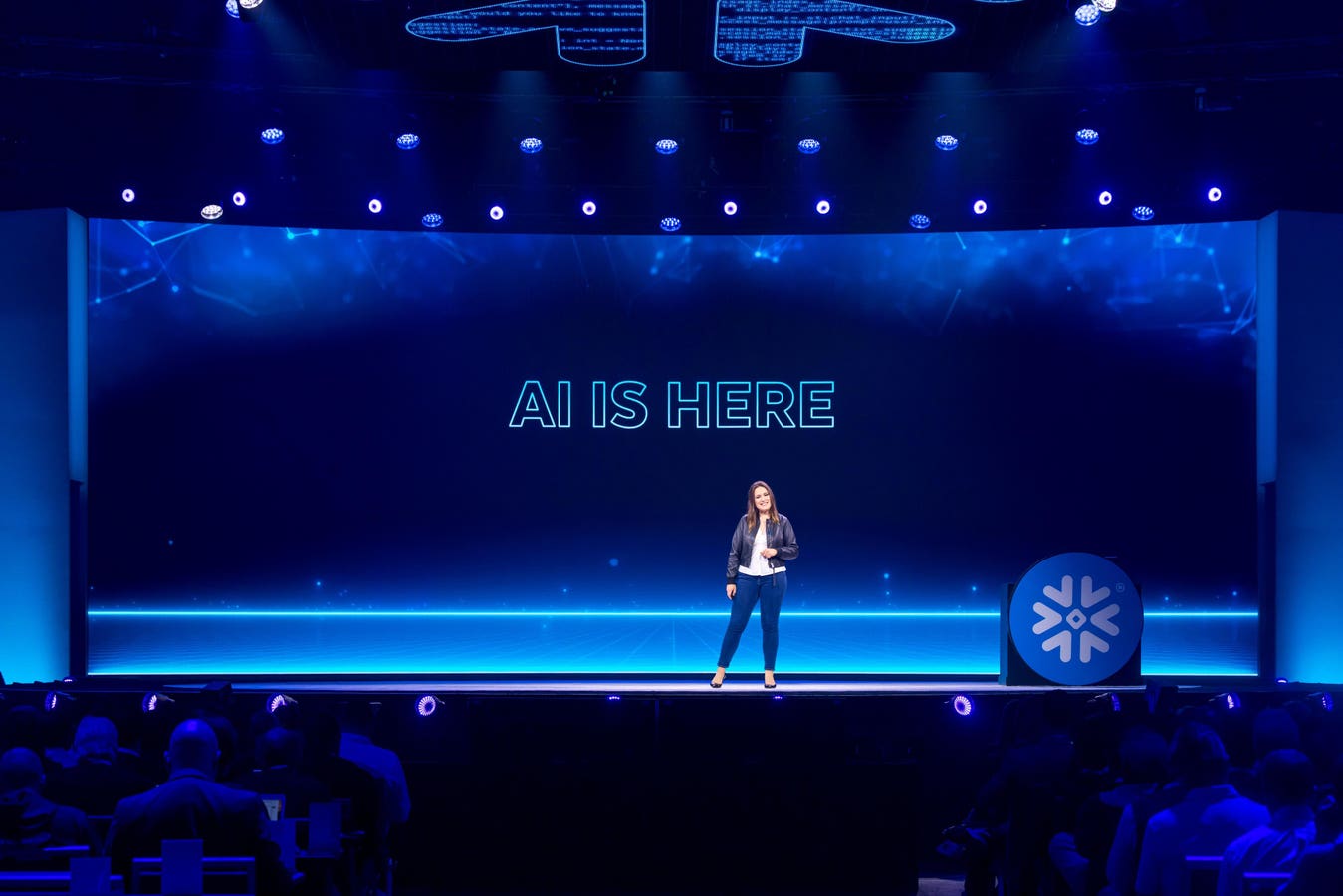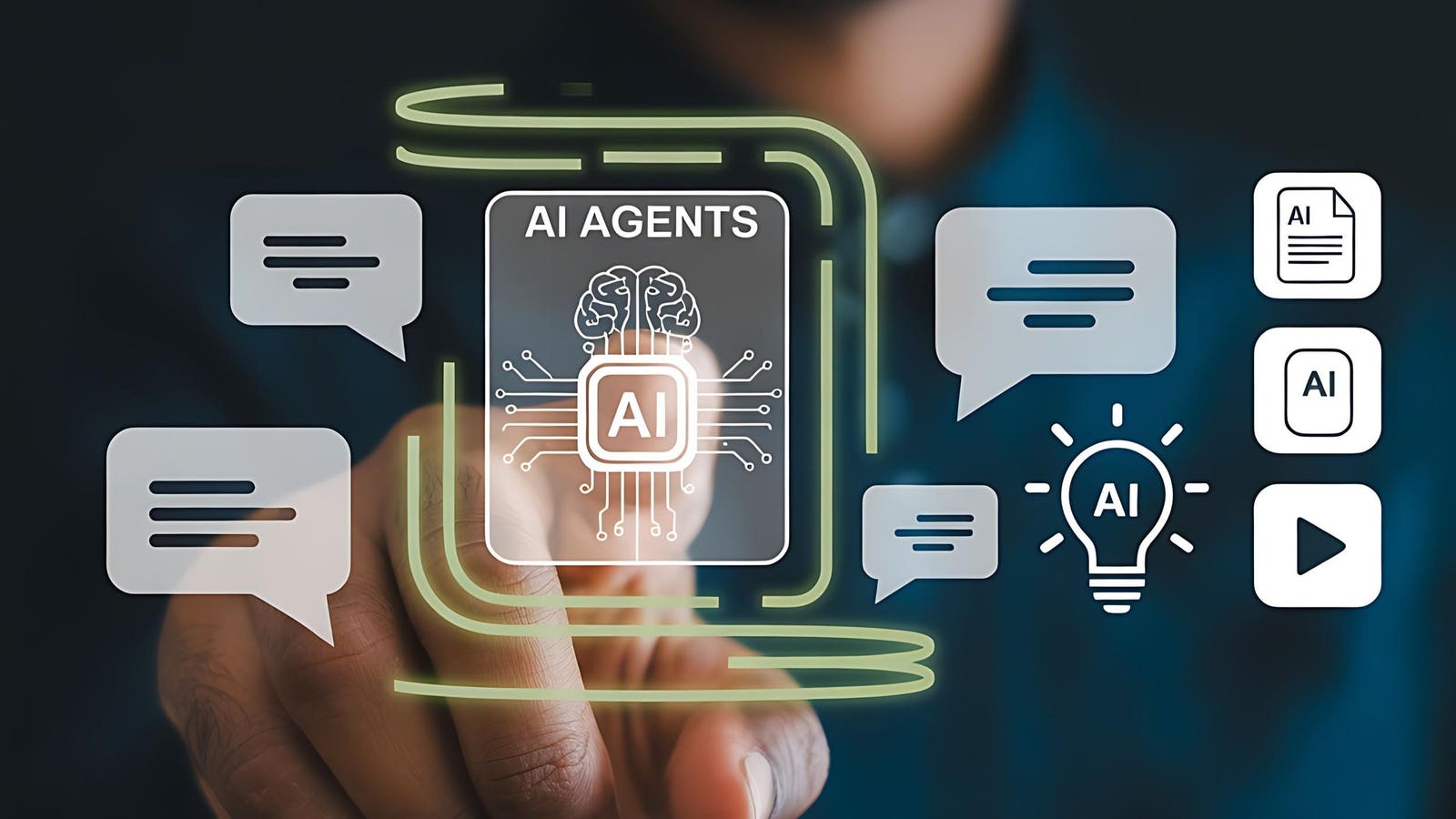The smallest action can have big impact in a global world in which AI influences how people and … More
As Earth Day 2025 arrives with the theme Our Power, Our Planet the conversation inevitably turns to technology’s role, particularly Artificial Intelligence. AI presents a duality: it offers never seen tools to tackle environmental challenges, yet its own development and deployment carry a significant environmental footprint. The AI climate conundrum compels us, especially within the business community, to move beyond viewing AI merely as a tool for efficiency or profit. It is time to consciously shape its trajectory for the collective good.
Amid the pressure that comes from the accelerating AI race it’s tempting to focus on the bottom line first, and plan to integrate the environmental sustainability angle subsequently. But delaying a conscious engagement with responsible AI development isn’t just an ethical oversight; it exacerbates the erosion of the environment and results in missed opportunities for truly sustainable innovation.
The rise of AI since November 2022 is forcing all of us to rethink how we work; we might as well seize this unique moment in time to take a step back and put things into a prosocial, pro-planetary perspective.
The Potential Of Prosocial AI For An Evolving Earth
The backdrop for the ongoing technological evolution is one of increasing environmental urgency. 2024 was the hottest year on record, surpassing critical temperature thresholds compared to pre-industrial levels. This is not an isolated metric; it’s part of a larger trend driven by factors like the 50% increase in annual global greenhouse gas emissions over the past 30 years and significant environmental degradation, such as the estimated loss of 10 million hectares of forest globally each year. Projections indicate that global demand for freshwater could outstrip supply by 40% by 2030, highlighting growing resource scarcity. These stark realities underscore the need for transformative solutions and intensify the focus on how powerful tools like AI are developed and deployed.
While these broad sustainability pressures mount – from climate impacts disrupting supply chains to growing stakeholder demands for environmental action – AI sits at a nexus. Its potential applications in optimizing energy grids, designing circular economies, monitoring ecosystems, and accelerating climate science are immense. However, the significant energy required for training large models and running AI infrastructure, often housed in vast data centers contributing notably to global electricity consumption, cannot be ignored. This operational impact, coupled with questions around data sourcing, algorithmic bias, and lifecycle waste, necessitates a focused approach on how we build and use AI.
Prosocial AI: Guiding Development for People, Planet, And Potential
Unlocking the pro-planetary possibilities of AI means to navigate its dual potential – maximizing its problem-solving capacity while minimizing its environmental and societal costs. This is where the concept of prosocial AI becomes interesting.
Referring to AI-systems that are tailored, trained, tested and targeted to bring out the best in and for people and planet, prosocial AI is developed deliberately to be pro-people, pro-planet, and thereby pro-potential. The trick is that it requires more than just technical proficiency; it is conditioned by human minds that guide its development with the aspiration of a positive social impact. That requires double literacy, a combination of human literacy – the holistic understanding of self, society, and nature and algorithmic literacy – encompassing not just knowledge of the latest AI tools, but how and why they work, and what their implications are. It means asking not only “Can we build this AI?” but “Should we?” and “How can we design and deploy it without jeopardizing the environment in which the implementation takes place?”
Prosocial AI In Action: Examples From The Field
Innovators are already demonstrating the power of applying AI through a prosocial lens. The following examples, emerging from MIT Solve’s climate solver teams, underscore the power of AI as a catalyst for transformative change across diverse sectors. They illustrate that when carefully designed and applied, AI can deliver substantial benefits for the environment — improving operational efficiency, cutting waste, and even supporting social equity.
Climate resilience – Amini platform addresses Africa’s environmental data scarcity using AI to provide sensitive insights for agriculture and climate resilience, directly supporting farmers and informing sustainable development decisions.
Waste reduction – SXD employs AI for zero-waste fashion design to tackle the industry’s dramatic buy and discard problem, reducing material consumption, emissions, and water usage in creating new apparel that is not only sustainable but aesthetically appealing and therefore desirable for customers.
Solar energy – Earthbond leverages technology to smoothen the switch to solar energy for African SMEs. It uses data to streamline processes that connect businesses with financing and installers, helping them to gradually replace polluting generators.
Water efficiency – Synnefa‘s smart greenhouses utilize the technology that underpins the Internet of Things logic and new AI models to optimize farming conditions in Africa. The result is a boost in yields and income combined with improved water efficiency and climate resilience.
Supply chain resilience – Aloqia (formerly Queen of Raw) creates real-time digital twins of a company’s ecosystem for end-to-end visibility of inventory. Hereby it equips brands to be proactive in their operational strategies and quantify their environmental impact via tailored algorithms.
Ultimately, AI is a tool to an end, not an end in itself.
These ventures illustrate that AI’s positive impact is magnified when its design and application are intentionally aligned with environmental and social benefits. That alignment depends on the human being.
Integrating Prosocial AI Into Business Practices
Embedding a prosocial approach requires moving beyond technological solutions alone; it demands integration into core business strategies and operations, reflecting a shift both institutionally and individually. While broad corporate sustainability goals like those set in recent years by Johnson & Johnson, Coca-Cola, or Ford create a favorable context, achieving sustainable AI requires specific focus. It involves AI governance frameworks that take a 360º perspective to look at the mutual interplay of individuals, institutions, countries and global markets. Within this multidimensional framing it becomes possible to prioritize energy efficiency systematically, from the design of AI models to their deployment, locally and at scale.
The endeavor of sustainable AI is conditioned by ruthless transparency in how AI systems function and how data is used. It also involves regular life cycle assessments that analyze each player in the AI ecosystem. This involves collaboration across functions, sectors, and countries – from R&D and IT to procurement and ethics, drawing on expertise from academia, the United Nations and civil society. It is time to dissolve outdated siloes because only a holistic understanding of people and planet will allow us to optimize AI’s impact on both. In a global world, the reconciliation of local needs with global values and imperatives is essential for a “glocal” future that does not destroy the planet.
EARTH: Prosocial AI In Practice For An AI-Infused Planet
The EARTH acronym provides a useful framework to guide AI sustainability efforts for both individuals and businesses :
Energy Efficiency: Prioritize the development and use of energy-efficient AI hardware and algorithms. Optimize models and infrastructure for lower power consumption.
- Practical Tip: Support research and adoption of energy-aware AI techniques (like model compression or efficient hardware). Question the necessity of using and training excessively large models for every task.
Alternative Power: Advocate for and utilize renewable energy sources to power AI infrastructure, including data centers and edge computing devices.
- Practical Tip: Choose cloud providers or data center partners committed to renewable energy. Encourage your organization to factor energy sourcing into its AI infrastructure decisions.
Reduced Waste: Minimize resource consumption and waste generation throughout the AI lifecycle – from data collection and model training to hardware manufacturing and disposal.
- Practical Tip: Promote data minimization principles (collecting only necessary data). Explore federated learning or techniques that reduce data transfer. Advocate for hardware reuse and responsible e-waste recycling.
Transparency: Promote transparency in AI development, deployment, and energy consumption to ensure accountability and informed decision-making.
- Practical Tip: Encourage clear documentation of AI models in your business, their data sources, and their intended uses. Support initiatives that develop standards to report AI’s environmental footprint.
Holistic Approach: Adopt a perspective that considers the full environmental, social, and economic impacts of AI systems throughout their lifecycle.
- Practical Tip: Before deploying an AI system, consider its potential unintended consequences and its impact on different stakeholders and the environment. Engage diverse perspectives in the design and review process.
Moving Forward With (Prosocial) AI
Earth Day 2025 is a sensitive checkpoint for our relationship with technology. The decisions made now about how we develop and deploy AI will inevitably shape our environmental trajectory. Moving toward a constellation that is sustainable means to harness AI’s potential for good with acute awareness of its downsides and the proactive management of its risks.
Humans have been placed in a world which was configured to evolve in a symbiosis where people and planet coexisted. Our task today is to preserve whatever equilibrium is left and restore what has been destroyed. AI may help to make that happen, but we cannot look toward it as the magical potion that will save us from the climate conundrum that we have created. Humans must start. Why not on April 22nd, 2025?
.








